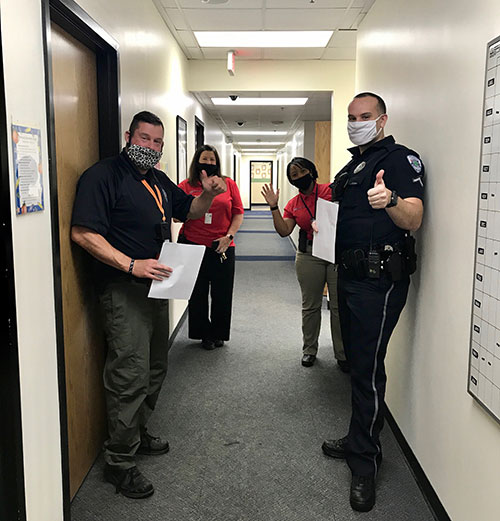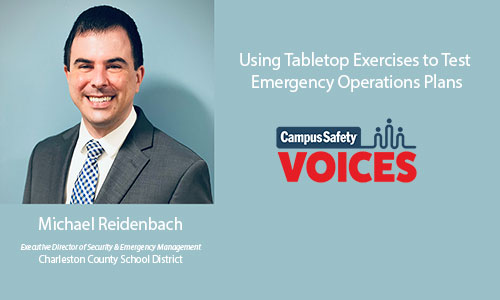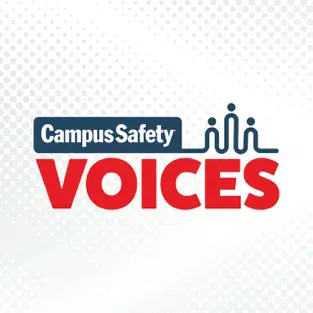Developing an emergency operations plan (EOP) is no easy feat but it was a task Michael Reidenbach gladly took on.
The EOP for Charleston County School District, which consists of 82 schools, hadn’t been updated since 2013. Reidenbach, the district’s executive director of security and emergency management and a 2022 Campus Safety Director of the Year finalist, collaborated with the first responder community and district leadership to roll out the improved 364-page EOP.
“Our existing plan established a great foundation for us to build upon but we really wanted to include a lot more detail in certain elements of the plan while also addressing things that weren’t in that plan,” Reidenbach told Campus Safety. “If you think about it, the school safety landscape has changed significantly during that time period, and so we looked to the REMS Technical Assistant Center and the U.S. Department of Education, and utilized their process for developing high-quality emergency operations plans.”
Part of that process was conducting an assessment to determine which risks and hazards should specifically be addressed. Based on that assessment and to test the updated EOP, Reidenbach launched the first district-level tabletop exercises which allowed leadership to rehearse incident management during a crisis situation (14:04).
[promo_content slug=”2022-campus-safety-director-of-the-year-winner-announcement-at-csc”]
Tabletop Exercises Completed By 40+ District Leaders
The exercises included an active shooter event, a school evacuation, and injured students and staff, and were given to more than 40 key district leaders.
“I love tabletop exercises because they’re a great way to really enhance your plan and make sure you and your team know what your roles are going to be,” said Reidenbach. “While the scenarios are obviously different, there’s a lot of frameworks you can establish in those exercises that are just really helpful when you’re in the moment responding to a crisis that you know is already laid out for you.”

Various Charleston County School District employees participating in a lockdown drill at an elementary school.
Reidenbach and his security team started the process with an exercise created by the district’s emergency preparedness coordinator. Once the exercise was completed by his office, the same exercise was given to the district’s operations division, including the chief operating officer and various department heads from facilities management, nutrition services, student transportation, information technology, capital programs, and nursing.
After that, the exercise was completed by the superintendent’s cabinet, which includes the superintendent, division heads, and school-level leaders.
“Not only [were we] trying to build that capacity within those various teams but to test the various elements of the emergency operations plan because there are a lot of questions. There are a lot of different things that have to be thought through in an emergency and you don’t want to be thinking through those in the middle of a crisis,” Reidenbach emphasized. “You want to try to establish those systems ahead of time so that everybody knows their roles and responsibilities during a crisis, and in a controlled environment is the best place to do that.”
Some other topics Reidenbach addressed include:
- Major changes that were implemented during the rollout of the updated EOP (2:01)
- Challenges faced when creating the new plan (3:48)
- How he implemented the district’s first Continuity of Operations Plan (COOP) and who was involved (6:49)
- Lessons learned through the process of creating the plan (9:34)
- How parts of the COOP aided in continuing education during the 3.5 months students were remote in 2020 (10:22)
Watch our full interview here or listen on the go on Apple or Spotify.
Interested in conducting a tabletop exercise with your team but not sure where to start? Here are 11 scenarios that actually happened at Idaho schools.









